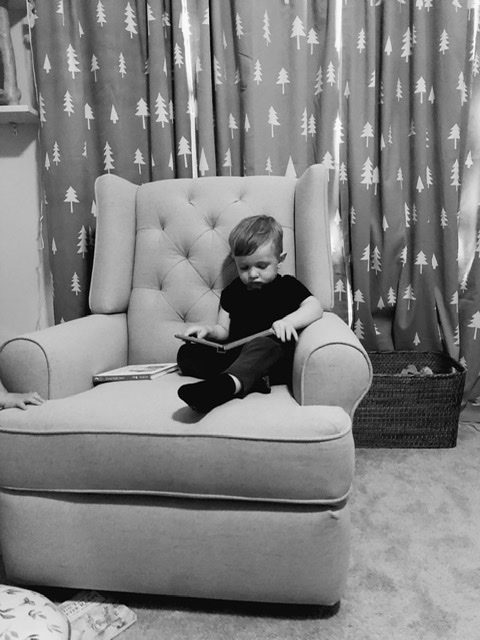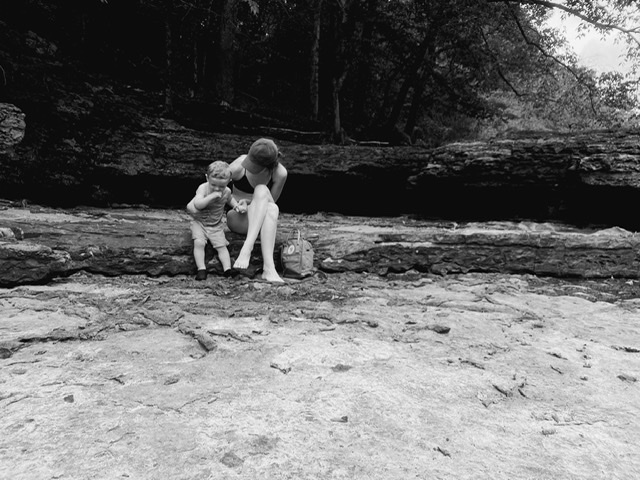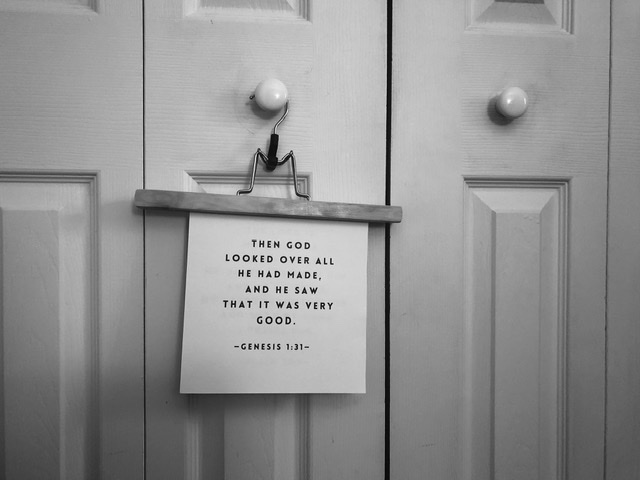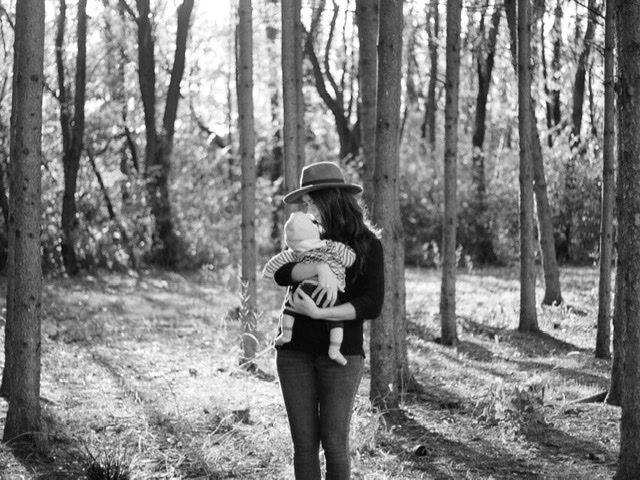
When I set out to find resources for nurturing development in children, most of what I encountered had to do with their mental or physical development. This was to be expected. But the more I researched the more the imbalance began to strike me as uncomfortable. There was seemingly a strange, unspoken pact to isolate the mind and the body for cultivation and to ignore the soul entirely. That’s bound to have some long term consequences.
Every aspect of our personhood is vital, but it awakened quite a bit of concern in me to imagine what happens when we ignore this spiritual component altogether. I believe concern is the right word, but also sadness. I felt sad imagining life disconnected from the soul because so much of my own life’s fullness has come from this very element.
So I began with a long thread of questions. Why the apathy towards the spiritual? Why do we prioritize mental and physical growth over the growth of the spirit? Is it because we sense spirituality is cognitively beyond children? Is it because we don’t know how to support spiritual development? Is it because we don’t think spiritual development is as important or useful as other areas of development? Is it because we don’t feel competent enough in our own spirituality to nurture it in our children?
Perhaps we place such heavy importance on the physical and mental milestones in our culture because they’re more easily measurable forms of growth. That made sense to me. It’s completely understandable to exhibit preference for focusing our attention in the direction of clear progress. Spiritual progress is certainly less quantitative and a little bit more complicated to gauge, but when we become too consumed by the mind and the body in isolation, we lose sight of some truly essential parts of what it means to be wholly human and wholly alive.
Spirituality in children seems intrinsic. It’s present from a rather early age, but it’s not always recognized as such because children are so gifted in seamlessly incorporating their spirituality into every aspect of their lives. I like the way that Dr. Lisa Miller articulates what this looks like for them,
“Natural spirituality is a direct sense of listening to the heartbeat of the living universe, of being one with that seen and unseen world, open and at ease in that connection. A child’s spirituality precedes and transcends language, culture, and religion. It comes as naturally to children as their fascination with a butterfly or a twinkling star-filled night sky. However, as parents we play a powerful role in our child’s spiritual development, just as we play a powerful role in every other aspect of our child’s development.
Science now tells us that this spiritual faculty is inborn, fundamental to the human constitution, central in our physiology and psychology…children are born fully fluent in this primal, nonverbal dimension of knowing. They need time to develop the wraparound of cognitive, linguistic, and abstract thinking, but young children don’t have to learn the “how” or the “what” of spiritual engagement. Bird and flower, puddle and breeze, snowflake or garden slug: all of nature speaks to them and they respond. A smile, a loving touch, the indescribable bond between child and parent that science has yet to fully explain, all of these speak deeply to them, too. Spirituality is the language of these moments, the transcendent experience of nourishing connection. Spirituality is our child’s birthright. We support their development when we read with them, talk with them, sing and play with them, feed and bathe and encourage them. Science now shows that the way in which a parent supports a child’s spiritual development has a great deal to do with how a child grows into that rich spiritual potential.”
Miller indicates in her book The Spiritual Child that recent research seems to hint that nurturing spiritual growth and healthy development in children is less about spoon fed perfect truths and more about a willingness to converse and lean into their curiosity and questions. (Insert a deep exhale.) This is comforting to me on many levels, but mostly because it’s freeing to know that it’s not the job of a parent to have all the answers all tidied, wrapped, and ready prior to raising a spiritually healthy child. It’s okay and even mutually beneficial to journey together.
My current journey hasn’t led me to a perfect definition of spirituality, but our spirituality seems to consistently be about an ongoing search for depth of life and meaning, for values that ground us, for interconnectivity beyond reason, for regular remembrance of what makes us feel alive and like life is worth living.
Spirituality is both nature and nurture; it’s both inborn and taught. From a nurture standpoint, it’s important for us to be intentional about nurturing spirituality because children are learning from us what they believe it means to nourish the soul or if they believe it matters at all. They learn by our example. I want Graham to know that there is more to us than our physical bodies, more to us than our intellect, more to us than our productivity or good behavior. What that means exactly can be somewhat mysterious, but there are things that make us feel our depth and purpose and connection; things that remind us that though our particular existence isn’t everything, it does matter.
From a nature standpoint, children are actively engaging with their spirituality all day long, as Dr. Lisa Miller said in the afore mentioned quote, “Bird and flower, puddle and breeze, snowflake or garden slug: all of nature speaks to them and they respond…” They seem to “get” spirituality and its inseparability from the rest of life.
Adulthood seems to train us well in compartmentalization. In fact, we become so alarmingly good at it, that we do it without even realizing. The danger lies in the fact that some things were never meant to be a mere compartment of our lives. They were meant to be woven throughout the whole of it. For the child, it seems as if everything is spiritual. In their precious innocence, they connect deeply to life in an admirable way. And perhaps one of the most beneficial things that we can do as adults is to honor that, to protect it, to kindle it, to learn from it, and try our very best not to smother it.
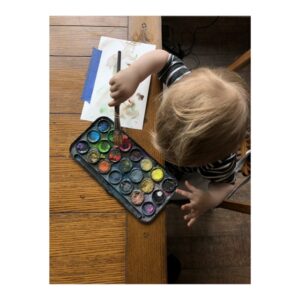
Spiritual Growth | In Practice
My personality is inclined towards dreaming. I can be pretty content to get lost in my moral imagination, pondering all sorts of ideals and hypothetical goodness. But I struggle at times when finding where those sparkly ideals intersect with reality; where essence and theory meet the everyday and tangible. So it felt important to me to create a section about practice and breathing life into ideas. It’s not exhaustive, but it’s a starting point for moving the nurturing from good intentions to actions.
- Creativity—This is incredibly open-ended. It’s not so much a specific list of activities, but a spirit we embody as we go about our days. It can look like arts and crafts, music, story, imaginative play, baking, etc. It can also look like none of those things. But it’s an important part of ourselves to connect with, to recognize that we are made to be more than consumers. We are created to continue participating in the act of creation, to continue to breathe life in the same way life was breathed into us. (You can find more thoughts on creativity in this post: On the Importance of Creativity.)
- Life Giving Rhythms—This involves self awareness of what breathes life into us and what drains life from us. But we practice intention in making space for life to flourish.
- Values Based Living—There is a satisfaction that comes from feeling an alignment in what we proclaim our values are and what our actual lives proclaim our values are.
- Nature—I don’t yet have words for it, but it feels something like magic the way being amongst nature and living things makes us feel more alive and connected ourselves.
- Wonder
- Gratitude—There are so many benefits to seeking the good in our lives, but one of the primary ones for us is to shift our mindset from one of scarcity to abundance. This simple discipline reminds us that there is enough good to go around and to carry us through and that transforms how we celebrate with others instead of competing with them. We practice this through things like #thegoodlist (inspired by Erik Loechner, through gratitude journals and evening prayers.
- Liturgy—We anchor ourselves to the good, the true, and the beautiful. And in so doing find ourselves anchored to the giver of all these things. (I’ve recently shared some free printable prayer cards here: Prayers to Pray with Little Ones and a free memory verse printable here: John 1:16 | A Monthly Memory Verse Series if you’re looking for a place to start.)
- Song
- Beauty
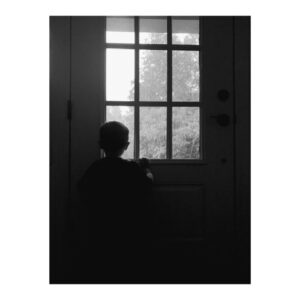
Spiritual Growth | In Reflection
It’s my hope that these questions might serve you to reconnect and reflect on both your own spiritual growth and that of your child. Because the two are really tangled up in one another, aren’t they? We learn what we want to teach our children about their spiritual existence by reflecting on our own spirituality and the values we’ve come to embrace and embody.
- What are some things I am grateful for? Why am I grateful for them? What do they reveal is important to me?
- When considering legacy, what do I care about the most? What do I hope that people remember about me?
- What values do I want to live by? What spiritual values/concepts are particularly important to me to nurture in my child?
- Currently, what values actually guide the way I live my life?
- When do I feel the most spiritually alive and connected? When does my child seem to feel the most spiritually alive and connected?
- What do I hope/imagine for my child spiritually? What might it look like for my child to become a healthy and mature spiritual individual? Am I modeling this well?How do we get there? What needs to happen in our day to day? What are some goals for the present year?
